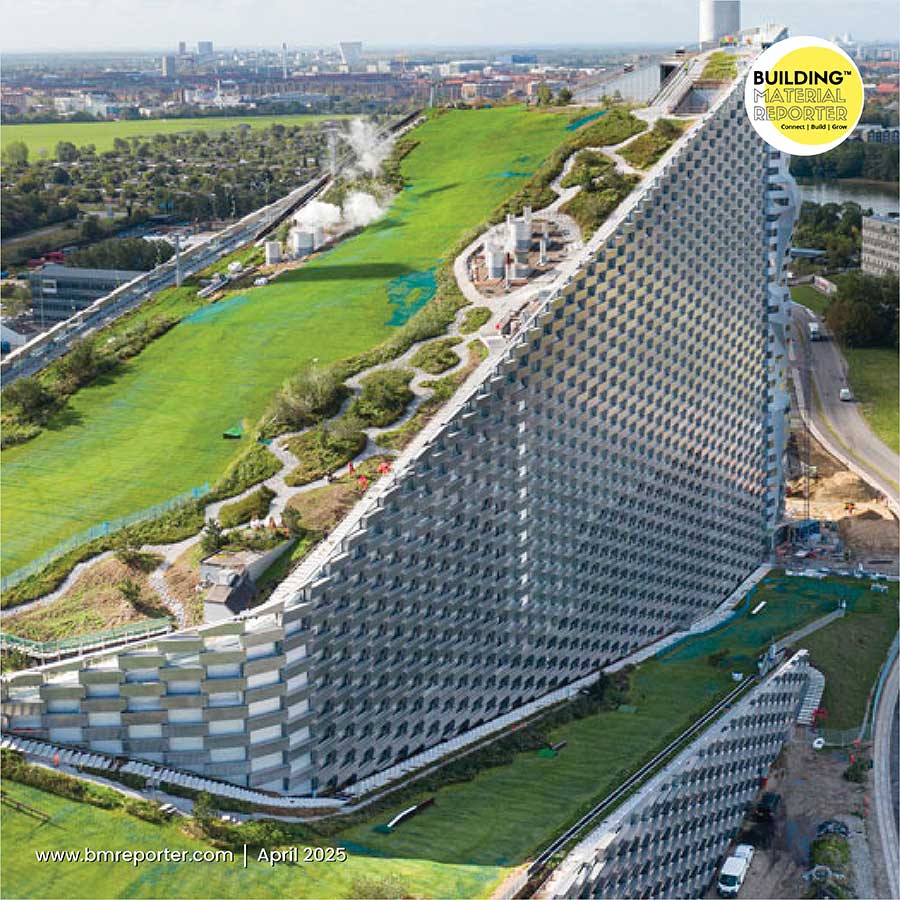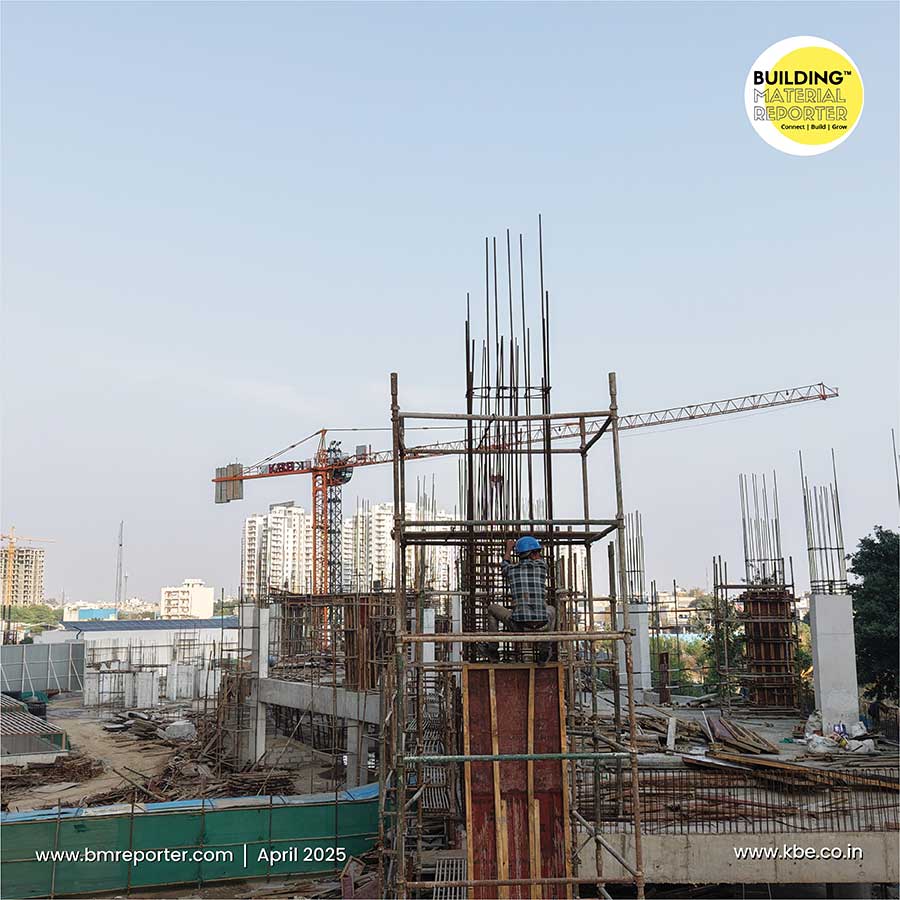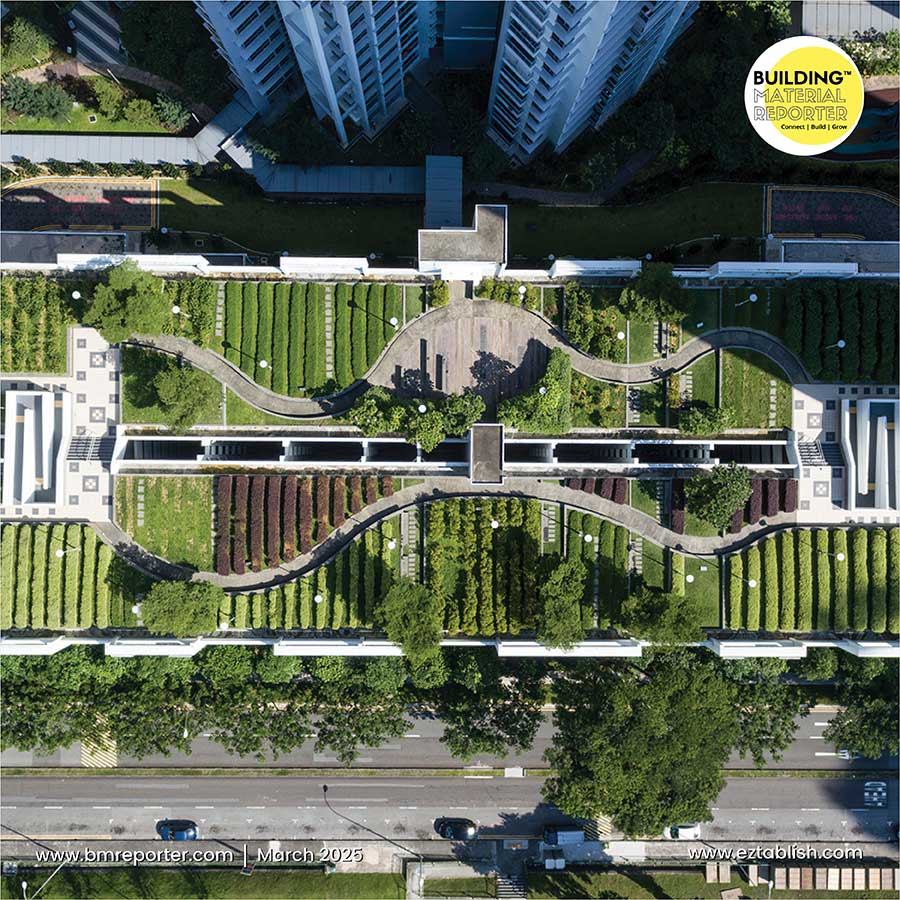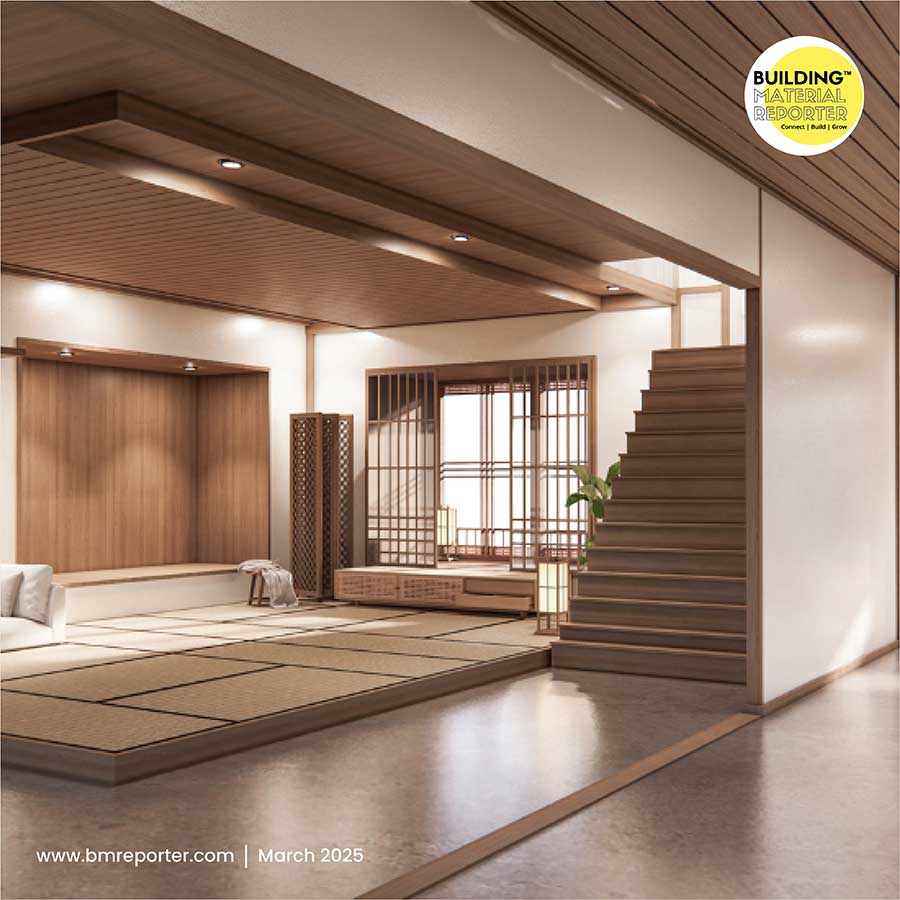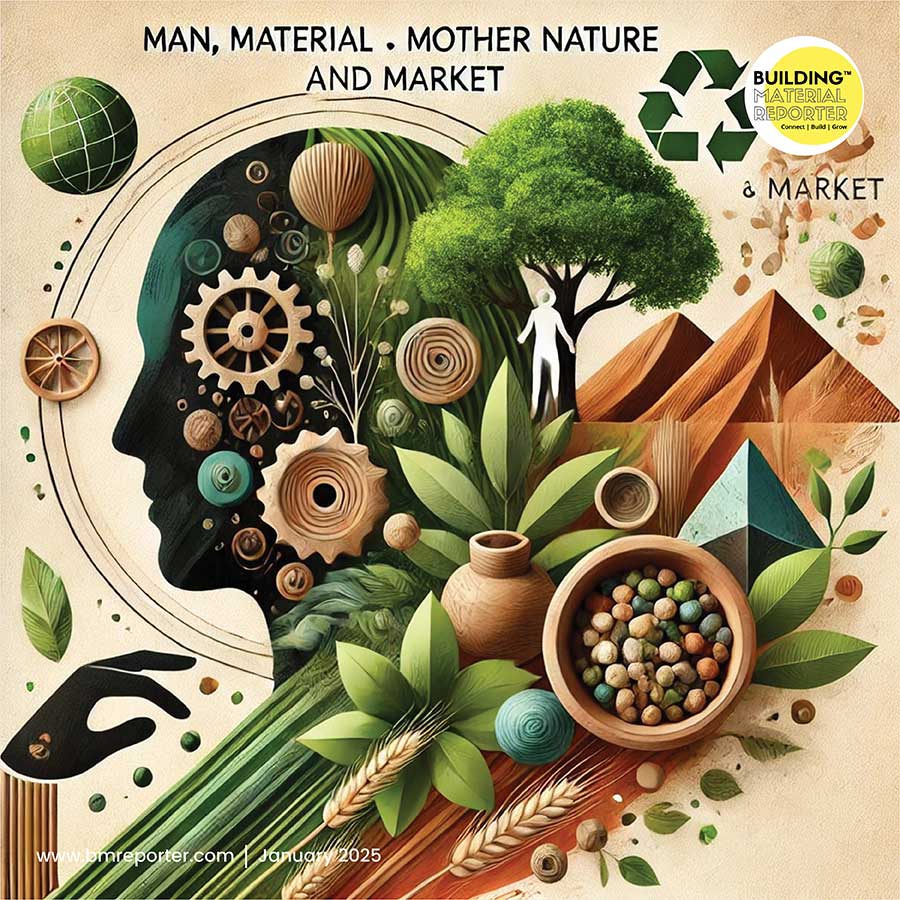Most Impactful New Trends in the Construction Industry 2024
- August 24, 2024
- By: Yukti Kasera
- INFLUENCERS
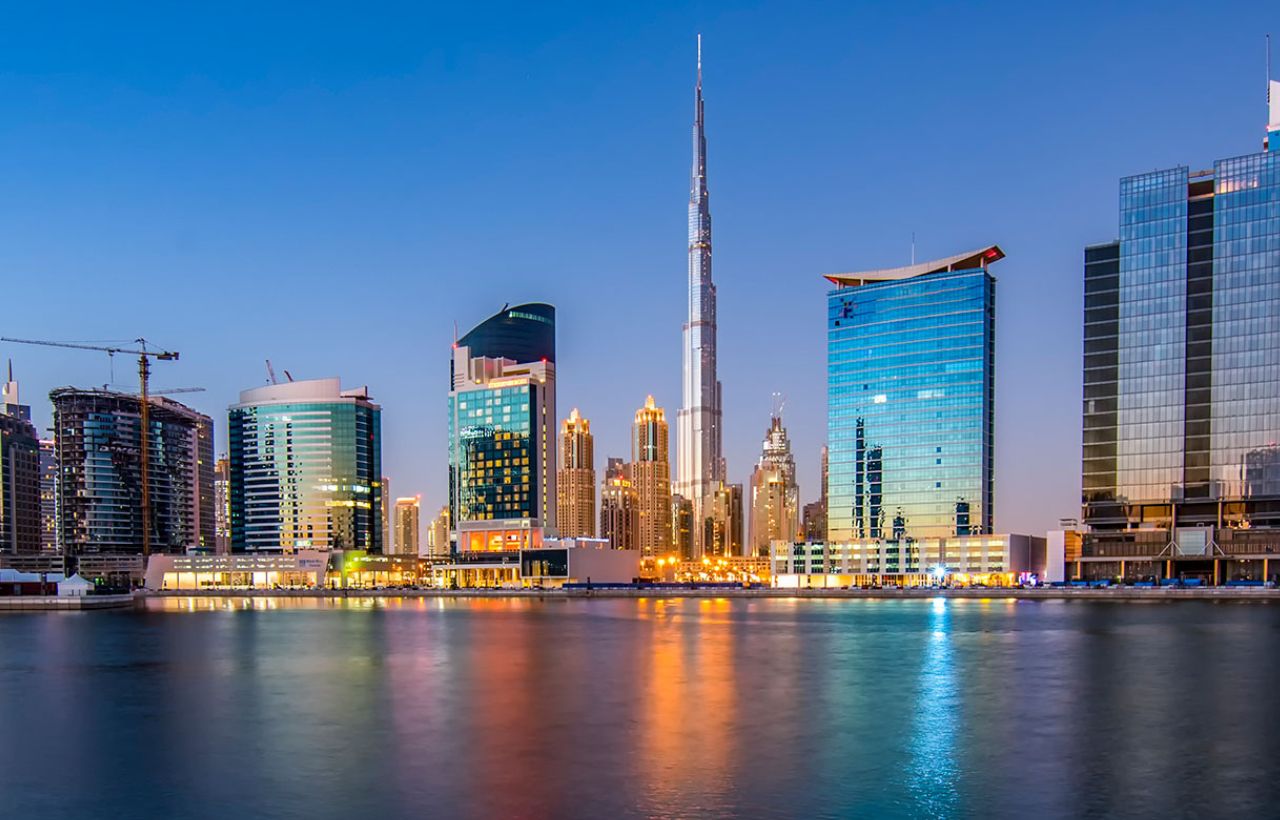 The construction sector is undergoing a profound metamorphosis propelled by objectives related to sustainability, workforce evolution, and technology breakthroughs. These developments are influencing the planning, building, and maintenance of buildings, resulting in more inventive, sustainable, and efficient methods. This is article is all about the summary of some of the top construction trends 2024, affecting the construction sector.The building sector is undergoing a profound metamorphosis propelled by objectives related to sustainability, workforce evolution, and technology breakthroughs. These developments are influencing the planning, building, and maintenance of buildings, resulting in more inventive, sustainable, and efficient methods.
The construction sector is undergoing a profound metamorphosis propelled by objectives related to sustainability, workforce evolution, and technology breakthroughs. These developments are influencing the planning, building, and maintenance of buildings, resulting in more inventive, sustainable, and efficient methods. This is article is all about the summary of some of the top construction trends 2024, affecting the construction sector.The building sector is undergoing a profound metamorphosis propelled by objectives related to sustainability, workforce evolution, and technology breakthroughs. These developments are influencing the planning, building, and maintenance of buildings, resulting in more inventive, sustainable, and efficient methods.
Latest 2024 Building Design Construction Trends
Due to shifting consumer preferences, environmental concerns, and technological advancements, the construction industry is undergoing a significant transformation. Here are a few of the most notable 2024 building design trends which you need to know:
Sustainable Building Construction Methods
In the construction industry, sustainability is becoming more and more important due to regulatory pressures and rising environmental awareness, specially while considering the new construction trends 2024. The goal of sustainable construction methods is to lessen a building's lifetime environmental impact. Important elements consist of:
- Green Solutions: There is a growing need for ecologically friendly structures. Energy efficiency, water conservation, and the use of environmentally friendly materials are examples of sustainable construction practices.
- Circular Economy: To reduce waste and increase resource efficiency, construction companies are implementing the concepts of the circular economy. Reusing, recycling, and renovating materials are all part of this.
- Buildings with Net-Zero Energy: These structures generate as much energy as they use, frequently using solar power and other renewable energy sources.
- Sustainable Materials: New materials, like composites made of recycled plastic and bio-based materials, are being developed with enhanced sustainability features.
People are also opting for sustainable practices that are being guided and validated by building certifications like BREEAM (Building Research Establishment Environmental Assessment Method) and LEED (Leadership in Energy and Environmental Design), which are becoming more common.
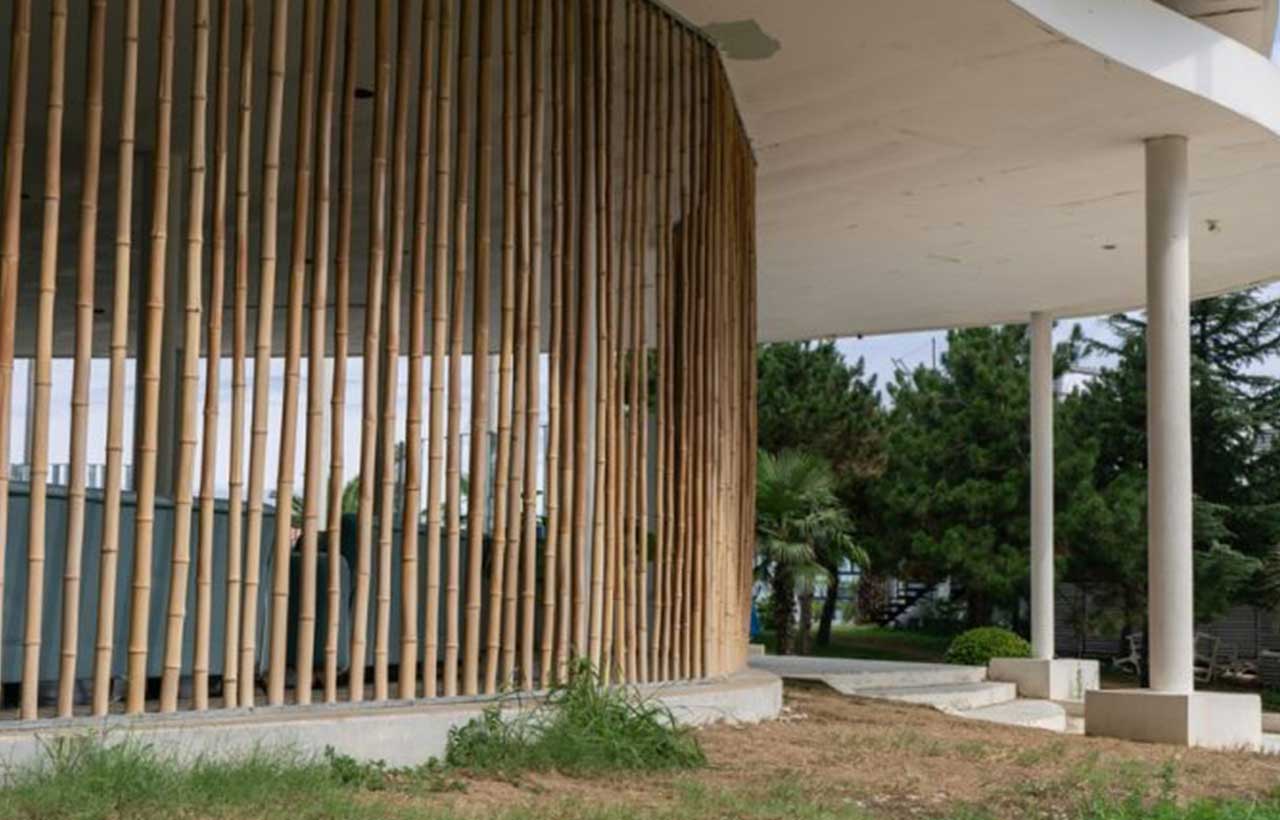
Building Information Modelling for Construction
Building Information Modeling (BIM) has developed from a specialized tool to a key element of contemporary building methods. Digital representations of a project's functional and physical aspects are created as part of BIM. By offering a centralized platform where architects, engineers, contractors, and clients can communicate and make well-informed decisions, these models help stakeholders collaborate more effectively.
Artificial Intelligence (AI) and machine learning algorithms have been integrated into BIM recently to improve model accuracy, forecast project outcomes, and optimize designs. Beyond the design stage, BIM is used to help with facility maintenance and construction management. The planning and implementation of projects has been transformed by the capacity to model different scenarios, such as modifications to the structure or enhancements to energy efficiency. It is one of the best amongst many future construction trends.

Methods which are Beyond Advancements
- 3D Printing for Building 3D Printing: Although still in its infancy, this technology has the potential to completely transform the building industry by making intricate structures with a fraction of the waste and labor associated with traditional methods.
- Prefabrication & Off-site Construction: Prefabrication is the process of assembling building components at the construction site by transporting them from a controlled factory setting. This can shorten the construction process, enhance quality, and cause the fewest disturbances.
- Modular Construction: On-site stacking and connecting of prefabricated modules allows for the construction of modular buildings. This approach is quick, easy to use, and economical.
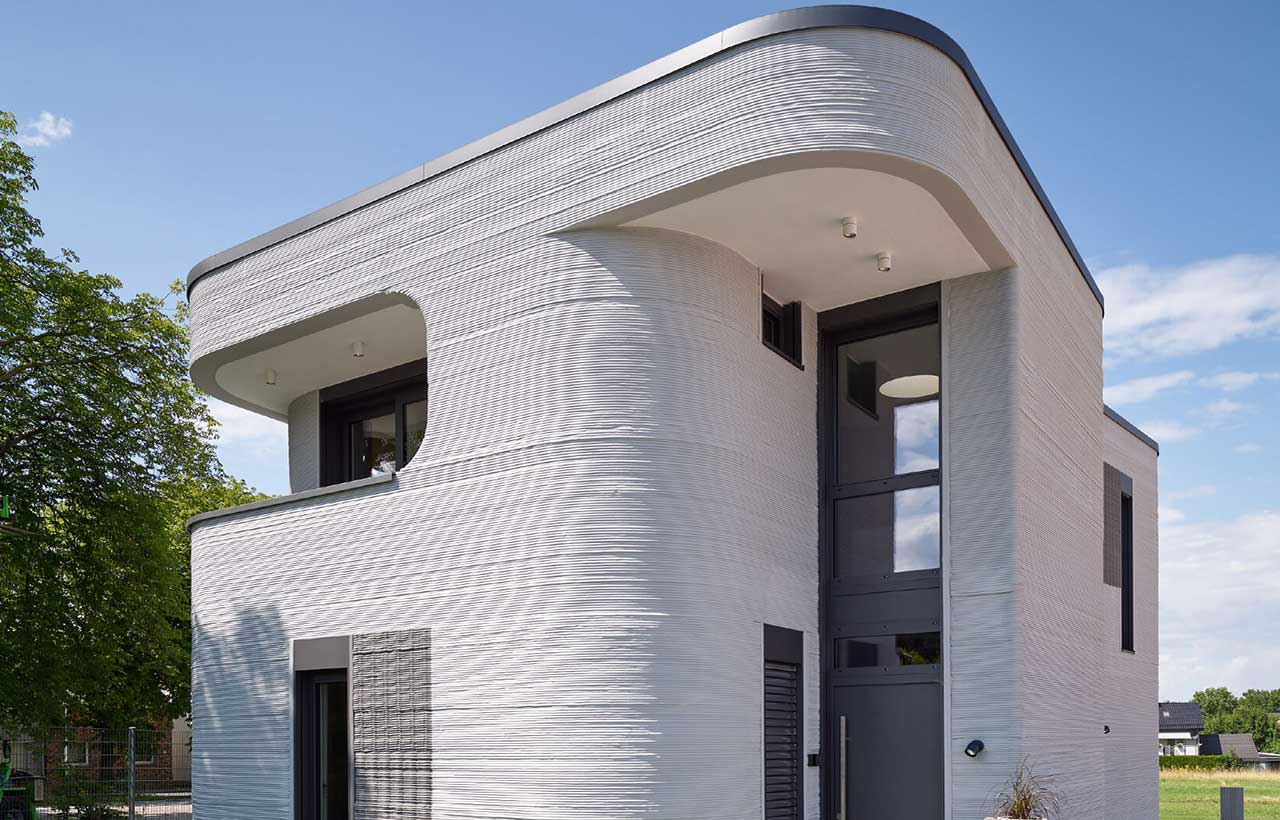
Emerging Trends
2024 has shown some terrific trends in the construction sector and these can’t be missed. The buildings are no longer just related to the civil structures, they are far beyond bricks and mortar. Here’s what BMR shortlisted as the best emerging trends in construction for 2024:
- Robotics: Autonomous systems and equipment for construction are being developed as a result of robotics advancements.
- Internet of Things (IOT): IoT devices are used to track equipment, keep an eye on construction sites, and streamline procedures.
- Intelligent designing: AI facilitates more intelligent project design and planning. It swiftly handles massive volumes of data, minimizing errors and conserving time and resources.
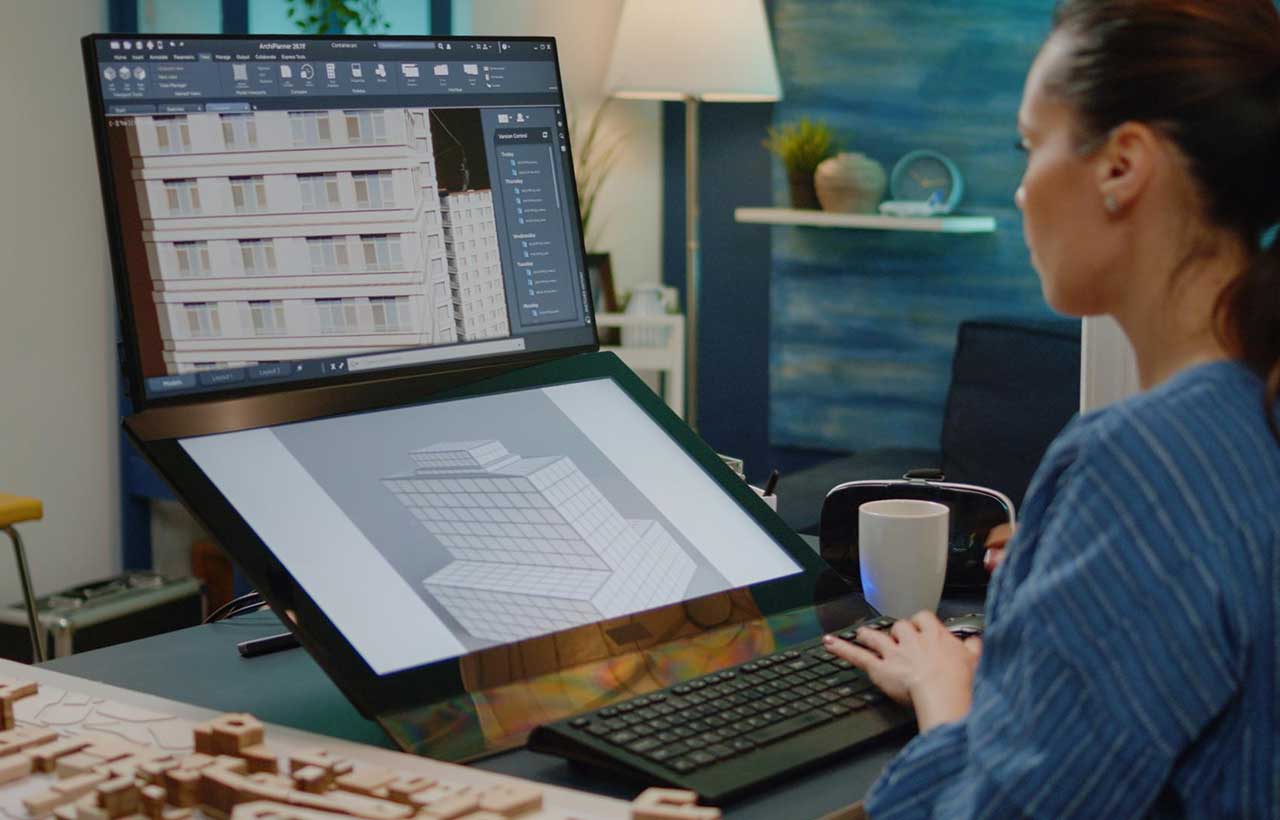 AI is being used rapidly for advanced and increased efficiency in construction
AI is being used rapidly for advanced and increased efficiency in construction
Innovations in Safety Precautions
Amongst the latest construction trends in the construction industry, worker safety and site safety are of utmost importance, and new innovations are constantly being developed to enhance safety. Among the noteworthy developments are:
- Wearable Technology: Tools like wearable cameras, vests with integrated sensors, and smart helmets track employees' whereabouts, track their vital signs, and deliver real-time information on site conditions.
- Augmented Reality (AR): By overlaying visual construction plans on the job site, AR applications assist on-site workers in understanding complex tasks and spotting potential dangers.
- Robotic Exoskeletons: These wearable gadgets lessen physical strain and the chance of injury for workers by helping with heavy lifting and repetitive tasks.
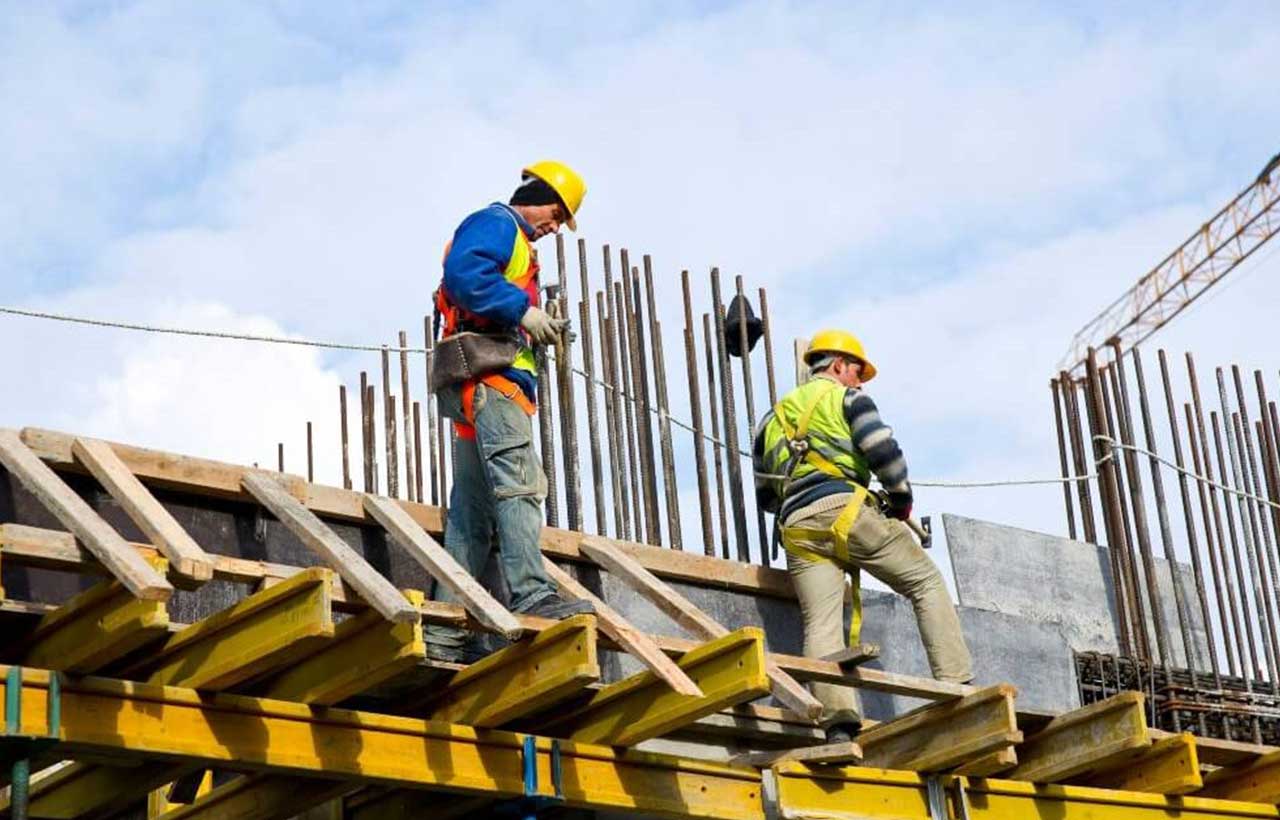 One thing is evident as we come to the end of this research of knowing the construction industry's 2024 trends: change is constant and acceptance of innovation is a must. Every trend has the potential to completely change the way we approach construction, from the potential of 3D printing and the safety and productivity gains to the strategic advantages of drones, the revolutionary power of robotics, the effectiveness of off-site construction, and the state-of-the-art developments in AI and Machine Learning.
One thing is evident as we come to the end of this research of knowing the construction industry's 2024 trends: change is constant and acceptance of innovation is a must. Every trend has the potential to completely change the way we approach construction, from the potential of 3D printing and the safety and productivity gains to the strategic advantages of drones, the revolutionary power of robotics, the effectiveness of off-site construction, and the state-of-the-art developments in AI and Machine Learning.
As time goes on, incorporating these trends will benefit employees, contracting firms, and final customers. The construction industry has a bright future ahead of it; it is up to us to take advantage of these developments and open the door for a more intelligent, creative sector.
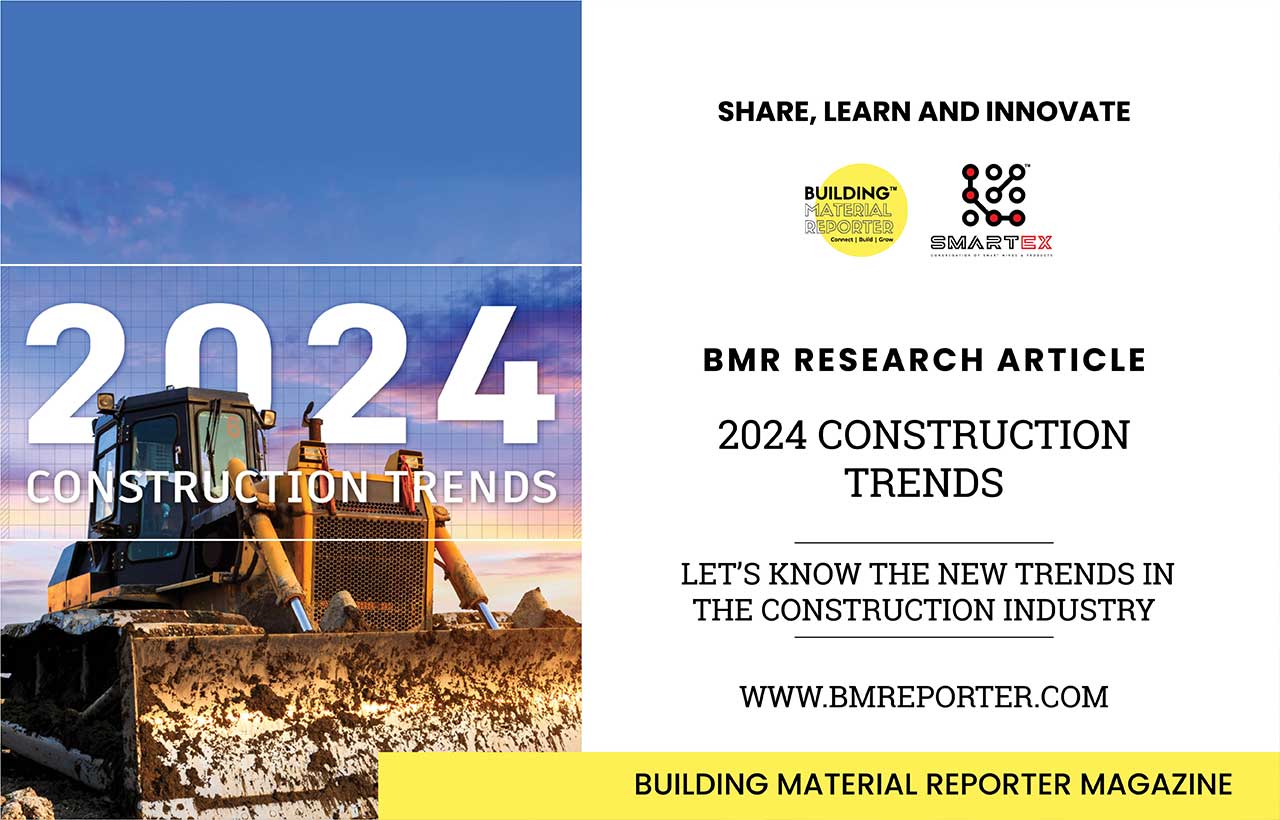 Building Material Reporter believes in serving the best! Stay tuned with us for more ideas and news related to construction, home decor, interior design, new projects, architecture and innovative materials in the industry.
Building Material Reporter believes in serving the best! Stay tuned with us for more ideas and news related to construction, home decor, interior design, new projects, architecture and innovative materials in the industry.
Frequently Asked Questions (FAQ's)
What's the impact of 3D printing in modern day construction?
Using digital designs, 3D printing, also known as additive manufacturing, enables the construction of whole structures or individual building components. This technology can expedite construction, enable complex designs, and decrease wasteful material use.
How significant is sustainability in the building industry?
Reducing a building project's environmental impact is the goal of sustainable construction. This entails minimizing waste, utilizing energy-efficient designs, and employing environmentally friendly materials. In addition to lowering carbon footprints and conserving resources, sustainable construction methods also increase a building's overall comfort and efficiency.
Do drones play an important role in the modular construction trends of the industry?
Drones are utilized for monitoring, inspections, and aerial surveys. They offer data and high-resolution pictures that support quality assurance, progress monitoring, and site analysis. Drones can increase project management's precision and effectiveness.
What are a few typical safety risks in the building industry?
Common risks include falls from roofs or ladders, electrical risks, and the possibility of collisions with large equipment like excavators, cranes, and forklifts.
What does India's building industry have in store?
The future of the construction industry in India looks bright, with revenue and development expected to reach US $1 trillion by 2025.
What is the largest issue currently plaguing the construction sector?
Today's largest issues facing the construction sector and a foresee for the future construction trends include a lack of workers, growing labor costs, increasing interest rates, project delays, safety concerns, etc. But innovation and technology are opening up new avenues for raising industry standards for safety, cutting expenses, and increasing productivity.


